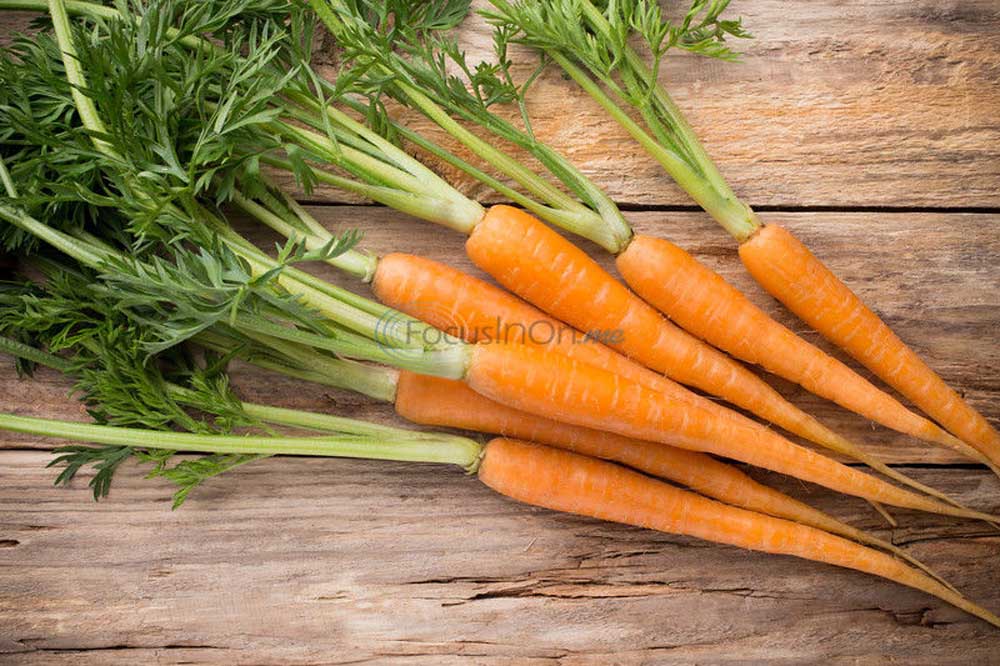Root vegetables: no flash, but tasty appeal
Published 11:28 pm Wednesday, April 22, 2015

- Root vegetables like carrots require less sun than peppers or tomatoes, so they're perfect for growing in pots in small, sunny spaces. (Photo courtesy Fotolia/TNS)
Pity the root vegetable.
Tomatoes and peppers are the stars of the summer garden. They’re flashy — big, purple heirloom tomatoes, or vines weighed down by softball-size fruit, or tall plants loaded with brightly colored peppers — and they sit out there in the sunshine for all to ogle.
Trending
Root vegetables — carrots, potatoes, beets and the like — usually get the spotlight only when they’re unearthed. While neighbors stop by the garden and ooh and ah at the lush tomato patch, the root veggies are out of sight, out of mind.
Still, anyone who has ever tasted freshly dug potatoes knows that the end result trumps the delayed reward. So it may be time to give the tomatoes and peppers a rest — or at least a gentle shove to the side, and get on the root vegetable bandwagon.
Where to begin: People usually start with things they already eat or cook with, such as radishes, beets and carrots, gardening expert Melinda Myers, author of more than 20 gardening books and host of The Great Courses’ “How to Grow Anything” DVD series, said. Those have been fairly standard garden fare for years. But she’s seeing old-time veggies that you don’t see as frequently in the store — such as rutabaga and parsnips — coming back.
Plant seeds or seedlings in deep, loose soil that is not too acidic. Loose soil helps the plant send down roots; clay or rocky soil may impede the path and produce forked roots. And plant them early; root vegetables are a cool-weather crop. If you don’t get around to it in time for spring, consider timing a planting for fall.
Watering is crucial to a successful crop. The University of Minnesota Extension says plants will need at least 1 inch of water a week during growing season, and a gardener should soak the soil thoroughly, not just provide surface watering, in order to promote good root growth.
Heirlooms and new hybrids can get a gardener out of a rut with unusual colors and shapes. Myers suggested long, slender white Asian radishes, beets with purple-red foliage or radish-size carrots. Or maybe purple carrots. Maybe.
Trending
“I grew some for a friend. Her kids wouldn’t eat them. ‘Carrots are supposed to be orange,'” she said.
Root vegetables need less sun than peppers or tomatoes — four to six hours a day is enough — so they’re perfect for pots in sunny small spaces. But be mindful of the variety you plant, because the depth of the container is critical.
“Any root crops will work, especially if you have a deep container or use a window box for (miniature) carrots or radishes,” Myers said. “And carrots look great. Their foliage is beautiful. I had a half-whiskey barrel full of carrots and radishes, and a neighbor came over and asked, ‘What kind of fern is that?'”
Scott Mozingo, product manager for the Burpee Home Gardens brand of vegetables, also had some suggestions.
A beet variety called Bull’s Blood has striking red foliage and is very ornamental. (Burpee’s website has a video on growing beets as well as many other edibles in containers.)
Mozingo likes potatoes as a patio plant, with greenery on top and the yield underground. He says gardeners can build “potato towers” or use burlap sacks or large coffee-bean bags to grow them in. Myers said that plastic totes or bushel baskets work, too.
“Turnips are kind of fun,” Mozingo said. “While the foliage is a bit boring, gardeners will see the colorful top sides of the veggie.”
Parsnips and parsley root (not to be confused with regular parsley) also both have attractive foliage.
Succession planting: Myers said to plant leaf lettuce and radishes early, harvest them, then plant beets next. Then, when they’re harvested in the fall, try another crop of radishes.
Seed tapes: If you don’t have the time for thinning your carrot or radish crops, consider seed tapes (strips of paper with embedded seeds that are appropriately spaced).
A winter bonus: For gardeners in colder climes, some root crops can be stored in the ground, said Myers, who lives just outside Milwaukee.
Eat your carrot crop during the growing season, but leave 20 or 30 carrots in the ground, she said.
“When the soil is getting crunchy (in the fall), spread straw or marsh hay over the area where you have carrots,” Myers said. “Dig them when you get a thaw. They’re so sweet, so delicious. … I’ve had them in January, February. The flavor is incredible. Turnips work, too.”
Try that with a tomato plant.






